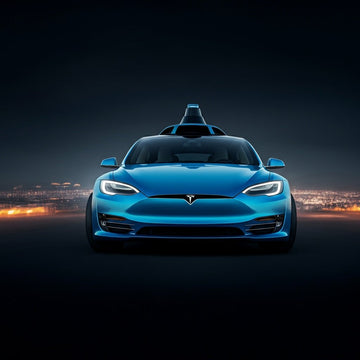Tesla's Approach to Autonomy: A Game Changer in the Self-Driving Industry
In the rapidly evolving world of autonomous vehicles, Tesla has positioned itself as a significant player, claiming that its approach to autonomy is "7x safer and 7x cheaper" than that of its closest competitor, Waymo. This bold assertion is not just a marketing gimmick; it reflects a carefully cultivated strategy that combines cutting-edge technology with a unique business model.
The Context of Autonomous Driving
The race towards fully autonomous vehicles is marked by intense competition and substantial investment. Companies like Waymo, Uber, and traditional automakers have poured billions into developing self-driving technology. However, Tesla's methodology diverges sharply from its competitors, primarily focusing on real-world data and a fleet-based approach.
Understanding Tesla's Strategy
Tesla's strategy is grounded in the belief that real-world data is crucial for developing effective self-driving systems. The company leverages its vast fleet of vehicles, which provides a continuous stream of data from real-world driving conditions. This data is used to improve the software algorithms that power Tesla's Full Self-Driving (FSD) capability.
According to Elon Musk, CEO of Tesla, “We are able to collect data from millions of miles driven every day, which allows us to refine our algorithms much faster than any competitor relying on simulation.” This data-driven approach is what Tesla believes makes its system safer and more efficient.
How Tesla Achieves Safety and Cost Efficiency
Safety is a critical consideration in the development of autonomous vehicles. Tesla claims its FSD system is 7x safer than Waymo’s, based on internal metrics that assess the number of accidents per mile driven. As of recent reports, Tesla's vehicles have logged millions of miles with a significantly lower accident rate compared to traditional vehicles, reinforcing its safety claims.
Cost efficiency is another area where Tesla asserts superiority. The company’s approach minimizes the need for expensive hardware typically associated with other self-driving technologies. Rather than using an extensive array of sensors such as LIDAR, Tesla relies on cameras and radar, which helps keep production costs down. This strategy not only makes Tesla vehicles more affordable but also allows the company to scale faster.
Criticism and Challenges
Despite these advantages, Tesla’s approach has faced criticism. Critics argue that relying heavily on cameras can lead to challenges in certain environmental conditions, such as heavy rain or fog, where sensor performance can degrade. Furthermore, Tesla's aggressive timeline for fully autonomous driving has raised concerns among industry experts about the potential for overpromising and underdelivering.
The Future of Tesla Autonomy
Looking ahead, Tesla is committed to refining its technology and addressing the challenges that come with it. The company has plans to expand its FSD software and has recently initiated a beta program that allows select users to experience the latest advancements in self-driving technology.
As Tesla continues to innovate, the potential implications for the automotive industry are significant. If successful, Tesla’s model could not only reshape the future of self-driving cars but also set new standards for safety and efficiency in transportation.
Key Takeaways
- Tesla claims its autonomy system is 7x safer and 7x cheaper than Waymo's.
- The company relies on real-world data gathered from its fleet to improve its algorithms.
- Cost efficiency is achieved by using cameras instead of expensive sensors like LIDAR.
- Critics highlight potential limitations of Tesla's camera-based approach.
- Tesla is actively refining its technology and expanding its FSD capabilities.
Conclusion
Tesla's bold claims about its autonomous driving technology reflect a distinct philosophy that prioritizes real-world experience over theoretical simulations. While the company faces challenges and scrutiny, its innovative approach may pave the way for the future of self-driving vehicles, potentially making roads safer and driving more accessible.










